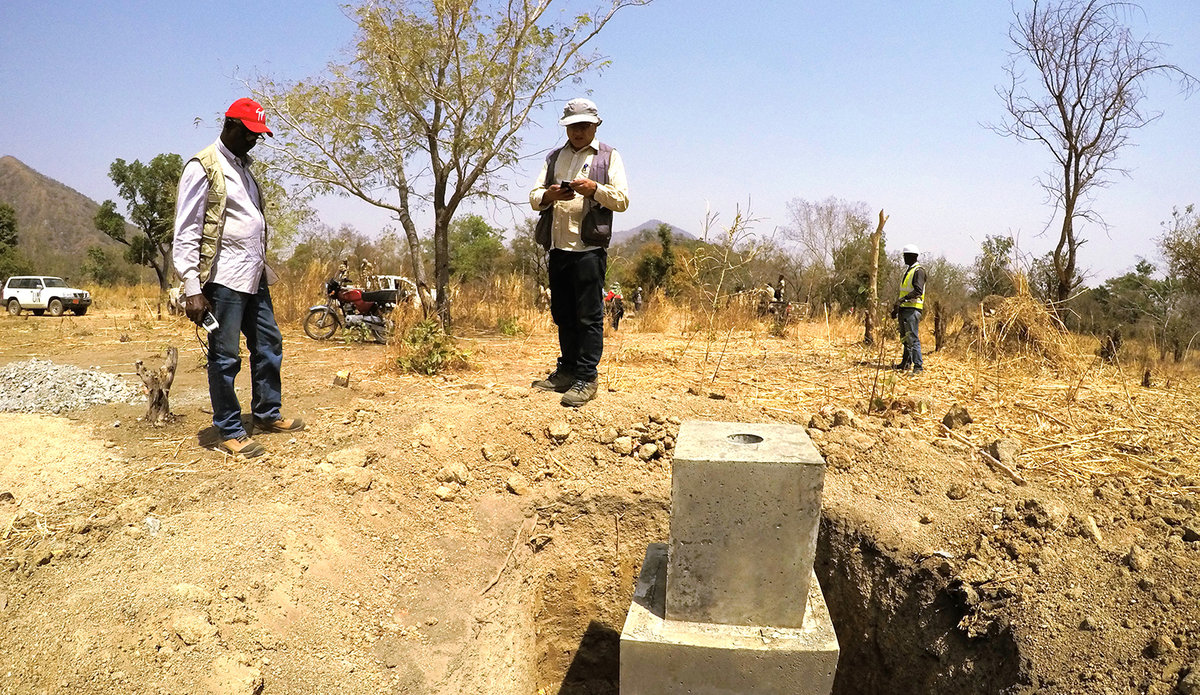The Cameroon-Nigeria Mixed Commission: A success in the resolution of boundary dispute
The Cameroon-Nigeria Mixed Commission has been established in 2002 to facilitate the implementation of the International Court of Justice (ICJ) judgment on the Cameroon-Nigeria boundary dispute as well as the demarcating of the land and maritime boundary between the two countries. Below three things you should know about the CNMC whose achievements are recognized as a success of preventive diplomacy.
What is the Cameroon-Nigeria Mixed Commission? What is its purpose?
The border conflict between Cameroon and Nigeria was ignited by competing claims of sovereignty over the Bakassi peninsula. Cameroon brought the case to the ICJ to resolve its claims on Bakassi. The CNMC was then established in November 2002 by the UN Secretary-General at the request of Presidents Paul Biya and Olusegun Obasanjo of Cameroon and Nigeria respectively. The main goal of the CNMC is to facilitate the implementation of the 10 October 2002 judgment of the International Court of Justice (ICJ) on the Cameroon-Nigeria boundary dispute.
What are CNMC’s activities and main achievements?
Under the Chair of Mohamed Ibn Chambas, Special Representative of the Secretary General for West Africa and the Sahel, who also serves as Chairman of the Cameroon-Nigeria Mixed Commission, regular meetings are alternatively held in Yaoundé and Abuja. The commission continues to mediate with the two Heads of Delegation of Cameroon and Nigeria to resolve and conclude the outstanding demarcation disagreements between the Parties. To date, 2,001 kilometers of boundary have been surveyed and agreed upon by the Parties (the total boundary is believed to be approximately 2,100 kilometers long).
The CNMC facilitated the peaceful transfer of authority over Bakassi to Cameroon through the Greentree Agreement, in conformity with the ICJ judgment. Bakassi is largely populated by persons identified as Nigerian nationals and it was the biggest stake in the border disagreement. Beyond Bakassi, the CNMC’s success in ensuring a peaceful resolution of the Parties’ competing claims and characterizations of their common land boundary is indeed a great achievement. It has required technical expertise, diplomacy, patience, perseverance, and the ability to inspire trust and confidence.
At this stage of CNMC’s mandate, CNMC is also involved in the planning of the logistics for the fieldwork of pillar construction, assess the security situation and carryout sensitization of the local population in the border area. CNMC, in liaison with the UNCTs as well as the state parties, have developed several projects for the benefit of local communities affected by the demarcation. These projects aimed at supporting confidence building measures, cross-border inter-community relations, and improving basic services. To fund these projects, CNMC is embarking in fund raising activities.
What are the biggest challenges CNMC is currently facing?
CNMC’s biggest challenges are related to the demarcation, political and security issues
CNMC’s biggest challenges are related to the demarcation, political and security issues. Concerning demarcation, significant portions of the land boundary are difficult to access because of challenges of the terrain. This would include mountainous regions; waterways; overgrowth in natural fauna; unpaved roads; and climatic challenges, when the rainy season makes fieldwork impracticable. In addition, even though the court resolved disagreements over the interpretation to be given to the delimitation instruments, the Parties sometimes offer competing interpretations of the court’s interpretations, which creates an impasse in completing the demarcation. In this regard, cumulatively, approximately 99 km of the land boundary remain in dispute because the Parties have yet to achieve consensus on how the court’s judgment should be implemented. What initially appeared to be a technical challenge hits a political impasse, since the concession-making required to resolve the disagreement can only be addressed at the highest levels of government authority.
As you may know, the process of demarcation is long, which is compounded when the demands of domestic politics in both Nigeria and Cameroon give priority to other issues, with the consequence that work on the demarcation may be delayed. For example, the Nigerian Presidential Election of 28 March 2015 created a delay in the project as the new Minister of Justice (in charge of the CNMC) was not nominated until October 2015, some ten months later.
CNMC staff work in a very challenging security environment. It has led to the loss of life of a UN consultant working on pillar construction with the TMT in the field. Tragically, on 31 January 2017, unidentified armed bandits attacked a CNMC team working on pillar construction. Five team members were killed in the attack. Since then, reinforced security measures were adopted.
 UN
UN


